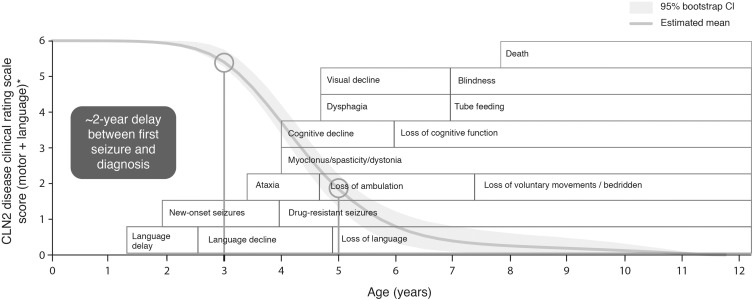Figure 1.
The presenting symptoms and progression of CLN2 disease. Reprinted from Lancet Child Adolesc Health; 2(8); Nickel M, Simonati A, Jacoby D, Lezius S, Kilian D, van de Graaf B, Pagovich OE, Kosofsky B, Yohay K, Downs M, Slasor P, Ajayi T, Crystal RG, Kohlschütter A, Sondhi D, Schulz A; Disease characteristics and progression in patients with late-infantile neuronal ceroid lipofuscinosis type 2 (CLN2) disease: An observational cohort study; 582–590; Copyright © 2018 Elsevier Ltd. All rights reserved, with permission from Elsevier.20 Age ranges represent those typical of the classic late-infantile phenotype. The first circle indicates the age at which the period of rapid progression typically begins (3 years), and the second circle indicates the typical age at diagnosis (approximately 5 years). Atypical phenotypes of CLN2 disease can vary in age of onset, rate of progression, and disease manifestation.
Abbreviation: CI, confidence interval.

